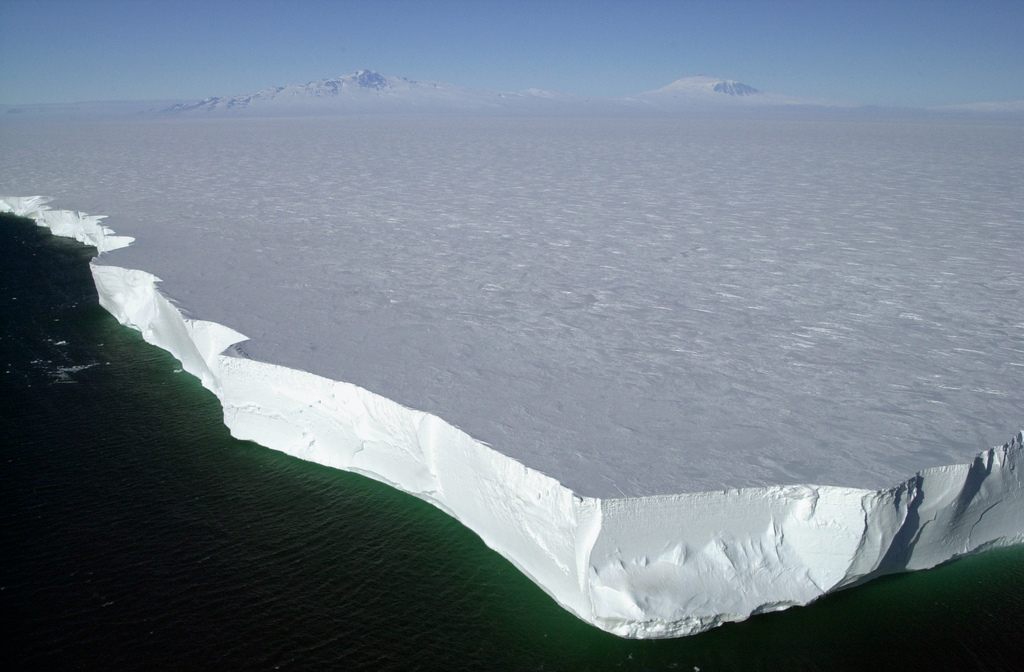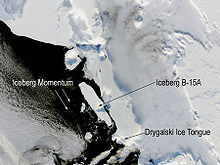Iceberg B-15
B-15 is, a huge iceberg, which was canceled in 2000 in Antarctica from the Ross Ice Shelf in 2002 and broke into several parts.
Formation
In March 2000, the B-15 iceberg broke off the Ross Ice Shelf and then drove north on the sea. Its area was initially about 11,600 km ² (about the size of Jamaica ). By, calving ' of B- 15, the Ross Ice Shelf was again the size of 1911, when it was measured for the first time by Robert Falcon Scott. The name B- 15 was assigned by the National Ice Center, which tracks the price of all icebergs with a length of more than 10 nautical miles ( 18.5 kilometers ). B denotes icebergs in the second quadrant between 90 degrees and 180 degrees west latitude, which are then numbered in ascending order. B-15 is, therefore, of the 15 recorded in the second quadrant big iceberg.
McMurdo Sound
The iceberg B-15 blocked the McMurdo Sound, which is the Ross Ice Shelf adjacent along the Transantarctic Mountains, so that the sound more icy because of the changed currents. The fact living colony of Adelie penguins suffered because of the longer routes to the sea a considerable decrease in population.
Collisions and divisions
In November 2002, B-15 broke up into several parts. The thereby resulting fragment B-15 A was initially even much larger than the area of Luxembourg and thus the largest free- floating object natural of the ocean, with around 122 km long and about 27 miles wide and 3,100 km ² expansion. It collided with the recorded also in atlases and maps Drygalski ice tongue, by the by this collision broke off a piece that can be seen floating in the picture below of the iceberg in the ocean. After that, B -15A was on a collision course with the Aviator Glacier. As a B -15A at Cape Adare on the Victoria Land ran aground, it broke on 27 and 28 October 2005 a number of small parts, the largest of which B -15M, B- 15N and B -15P is called.
The course of the original fragment is pursued, inter alia with a fixed GPS receiver. Also the end of 2009, some of the iceberg were still on the road.
On 11 February 2010 collided B-15 K with the ice shelf near the German research station Neumayer Station III. This collision has been recorded by the sonar system of the research station.

_(NSF).jpg)







